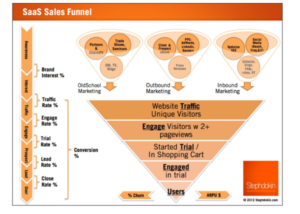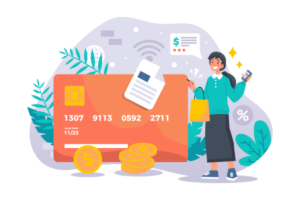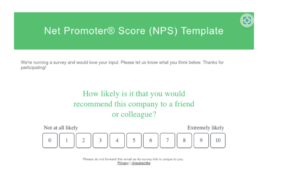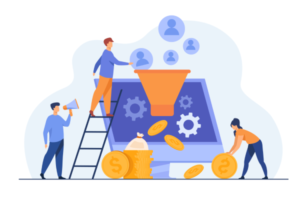Want to make the shift from a Blursday to a SaaS growth day? You’re in the right place.
Here you’ll find a SaaS free trial dictionary that will inform you how to navigate these all-digital and all-crowded times. Competition is growing stronger each day and being up-to-date is key for your business to thrive.
Understanding what makes a SaaS free trial successful and when it can be detrimental for your business will help you scale rapidly, increase revenue, and build your customer base.
Wait, what exactly is a free trial?
As a true player in the SaaS field, you must know the effect that a free trial has when talking about converting leads into paying customers. A SaaS free trial is a popular strategy used to give the user the opportunity to test your product/service for free, for a limited time, in order to influence the purchasing decision. You can say it’s almost like a demonstration, the chance to show your potential customers how your software works and how it can have a beneficial effect on their day-to-day life, whether personal or professional.
Keep in mind, however, free trials are part of a bigger scheme – the SaaS sales funnel, to be exact.

Image source: SaaS Free Trial: Everything you need to know – Pierre Lechelle
Potential customers follow a traditional user path: visit your website, come across your software, and sign up for a free trial. After using it and testing its benefits, they may decide to buy it.
According to a Totango study conducted among 550 Software-as-a-Service (SaaS) companies regarding the freemium, free trial and pricing practices, the most valuable takings were:
- 44% offer a free online trial
- 41% offer a 30-day free trial
- 18% offer a 2-week free trial
- 41% list pricing on their site
Considering this, a total of 56% of the companies do not offer free trials and this may be because the Customer Acquisition process is lengthy and has multiple components, with free trials being just one of many.
What is the difference between a free trial and a freemium model?
As already pointed out, a free trial means providing free access to all your services, according to a time frame that usually varies from a 7, 14, 30, etc. day period.
On the other hand, freemiums enable your customers to have access to a limited, free version of your software that they have for life.
Even before thinking about choosing between offering a free trial and a freemium model according to your business’ needs, you should ask yourself, which one is supported by your go-to-market strategy?
How can you structure your free trial model?
As with many things in life, free trials can also be personalized. There are four standard methods of a free trial:
- Opt-in with no credit card
- Opt-in with a credit card
- Limited functions/features
- Limited users or limited trial time
Opt-in with no credit card

Low friction and instant gratification are the two magic concepts generally accepted and preferred among users. Some of them are unsure about what a service can do for them, or they have a limited interest in it. Either way, this free trial model is easy, accessible, and could get you more leads – whether they are convertible or not remains to be seen.
Opt-in with a credit card
As opposed to the first, this model does create quite a bit of friction and is considered a sneaky strategy for a free trial user. There are many cases where the road from entering your credit card details for a free service to forgetting to opt out of the free account is short and results in a significant to-pay bill.
People will always be cautious with their sensitive information and strong-arming them into revealing it doesn’t necessarily help create a base of trust for a long-lasting relationship. However, it can give you valuable insights as to which of your customers have a genuine interest in your service and plan on upgrading their plan and become paying customers.
So, opt-ins with no credit card generate more leads, but the ones with credit card are more likely to drive conversions. Make sure you crunch the numbers and make the right decision for your business.
Limited functions/features
This one can be a double-edged sword. Upholding the paid, premium features, and waving and parading them around your free trial, might deprive users of experiencing the exact benefits of your product. And if the customer doesn’t know how great the paid upgrade would be, why would they have a strong impulse to purchase it? Chances are they won’t.
On the other hand, if your free trial experience is a positive, useful, even valuable one for your customers, they may act on that satisfactory opinion and put their trust in your paid, upgraded plan.
Limited users or limited trial time
If you’re trying to get a B2B sale, limiting users on a software could persuade the people who are using it to go for the whole experience, so they can share it with their teams.
But a more conventional approach would be to limit the trial period. It is the trial period that will make or break your strategy, so check your analytics to see how many logged in users you have when setting your free trial and evaluate the strength of your onboarding process.
The length of your free trial is based on the specificity of your product and is influenced by several factors. This time frame is basically translated into how long it takes for your customers to reach the “Aha!” moment and make the practical decision to go for the paid version. For most B2B companies, the norm is to have a 14–30-day free trial, the shorter ones (e.g., 7 days) can be reserved for situations in which you need to apply pressure; these are usually used in the B2C area.
Looking for the best SaaS free trial best practices to help boost conversions in 2023? We’ve got you.
Make your intentions clear
Honesty is the best policy, and this should apply to SaaS too. You need to be straightforward with how your software works and what it can do for the user, from the beginning. Deciding to upgrade to a paid plan is only possible if you make it crystal clear what the user is getting from your product. Include specifications on:
- How long is the trial period?
- What are the products, services, and features the customer will have access to?
- Does the customer get charged automatically after the trial period is over?
- Pricing – How much should the customer pay?
- When will the charge take place?
- Is there a way to pause or cancel the free trial?
Analyze your competitors

If you want to get valuable insights and improve your service, go head-to-head with your competitors (metaphorically speaking).
Essentially, developing a good competitor’s research strategy is one valid method of evaluating what may not working, by comparing your offer to your competitor’s offering.
Some things to look at are duration length, terms of conditions, one-time payment discount offers upon sign-up, and utilizing automated follow-ups during and after the free trial period, because they will grant you the right of entry to the conversion and customer acquisition land.
Aim to optimize your onboarding experience and don’t forget to personalize
The fine line between free trial users and paying customers lies in the experience you’re providing them with. The sooner they realize just how valuable your product is, the sooner they will convert.
Your onboarding process should have a main objective: to educate the customers on how to use your product. Be sure to make it an easy, comprehensive, and even enjoyable practice. You can get creative and include videos, webinars, tutorials, or even interactive quizzes or mini courses to make sure your customers feel supported.
It is human nature to want to feel special and your customer is no different than that. Designing personalized trial dashboards with their personal information, progress tracking, recommended features to try next and so on, will create a sense of bonding and community.
Bonus: Read more about Your Go-to Guide to SaaS User Onboarding in 2023.
Offer incentives to convert
Gifts and freebies are music to your customer’s ears. Incentives, especially time-sensitive offers, are a great way to get your user’s attention and help them quickly make up their mind about joining your client network. To help users convert and build loyalty, consider providing discount codes, free access, or added services. The point is that the discount will encourage users to take advantage of more features without being charged, thus increasing their ability to become paid subscribers earlier.
Basically, offering anything free to enhance the functionalities they are already using will do the trick.
Offer self-service support via free resources and a knowledge base
Make the user’s acquaintance with your service as simple and comprehensive as possible, as is a new process for them.
Provide a strong understanding base that will allow them to find answers fast and easily. This will improve the user’s experience and make them even more interested in paying for products.
The self-service portal should be well-furnished with relevant, categorized, and searchable content to ease the user’s navigation and interaction with the service.
Put email marketing to good use
Ongoing engagement with your product is a powerful weapon. A 40-60 % percentage of people who sign in for a free trial will use it once and then never come back. To fight this, automated email campaigns triggered by new sign-ins work best. You can do market research, segment your audience, and filter the community you want to build so you communicate with them based on insights.
NPS surveys to the rescue
When you just can’t seem to convert users to paid customers, ask for feedback. That’s when NPS surveys come in handy, as they will reveal exactly what is not working based on users’ experiences. They are micro-surveys that are easy to understand, and they will reveal how your customers feel about your business. They work better than traditional surveys and have high engagement – 54% of companies get a high response rate.

Image source: Net Promoter Score ® | NPS ® Survey | SurveyMonkey
Some of the questions most likely to get responses are:
- On a scale of 0-10, how likely are you to recommend our product?
- What features do you like the most?
- What could we do to improve your experience?
Keep track of your free trial conversion rates

The free trial conversion rate is the percentage of users that opt for the paid service after going through the free trial. This rate is an important metric in SaaS because it offers data for businesses to take actionable plans.
Knowing the number of people who are willing to pay for your service after trying it will give you valuable insights into your customer’s wants, needs, and loyalty. Based on this information, you can customize your marketing and product development strategies. When the conversion rates improve, so does the revenue, and you can scale your business and maybe reach international markets. Customer demographics are key to building a community and targeting the right audience. This is where knowing the free trial conversion rate helps you access data about customer demographics and their interests. Also, because the free trial is an important part of the customer acquisition process, when you find that conversions are low, you may think about making modifications so it would be more effective.
Bonus: Find out more Conversion Rate Optimization Strategies to Boost Your Revenue.
According to The Data-led Blog benchmarks that took into consideration hundreds of SaaS companies offering opt-in and opt-out free trials, for every 10,000 visitors, the numbers are:
Opt-in free trial
- 2% conversion rate = 200 opt-in free trials
- 25% conversion rate = 50 customers
- 80% customer retention rate after 90 days = 40 customers
- 0.40% end-to-end conversion rate
Opt-out free trial
- 1% conversion rate = 100 opt-in trials
- 60% conversion rate = 60 customers
- 60% customer retention rate after 90 days = 36 customers
- 0.36% end-to-end conversion rate
Conclusion
Your SaaS free trial strategy will help you enhance your customer acquisition process, increase conversions, generate more revenue, and motivate you to look into your service for future overall business strategies. Having your expectations mapped out, upgrading your onboarding process based on your users’ interests, using feedback, maintaining communication, and keeping track of your success will get you closer to achieving your most ambitious goals.